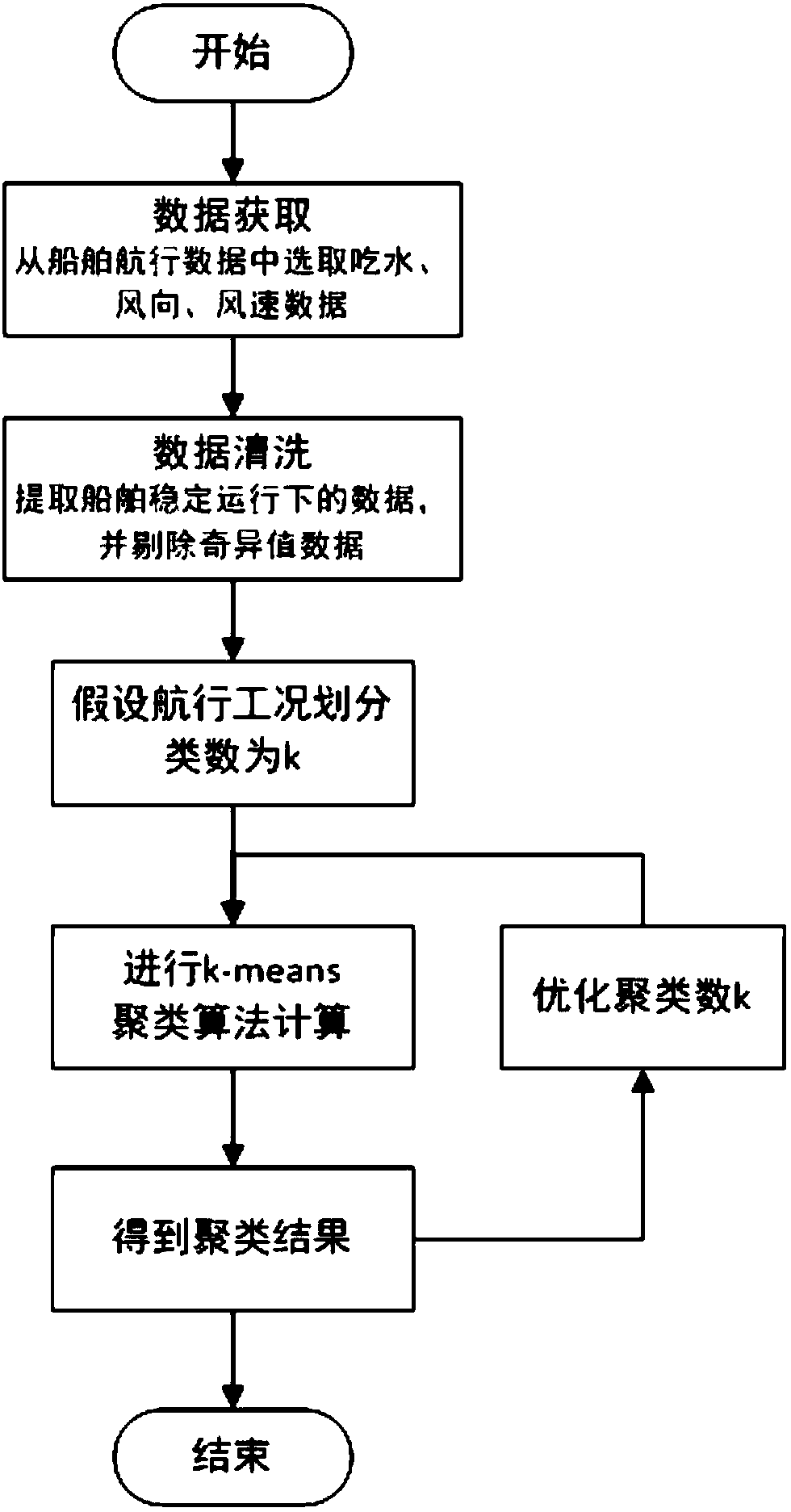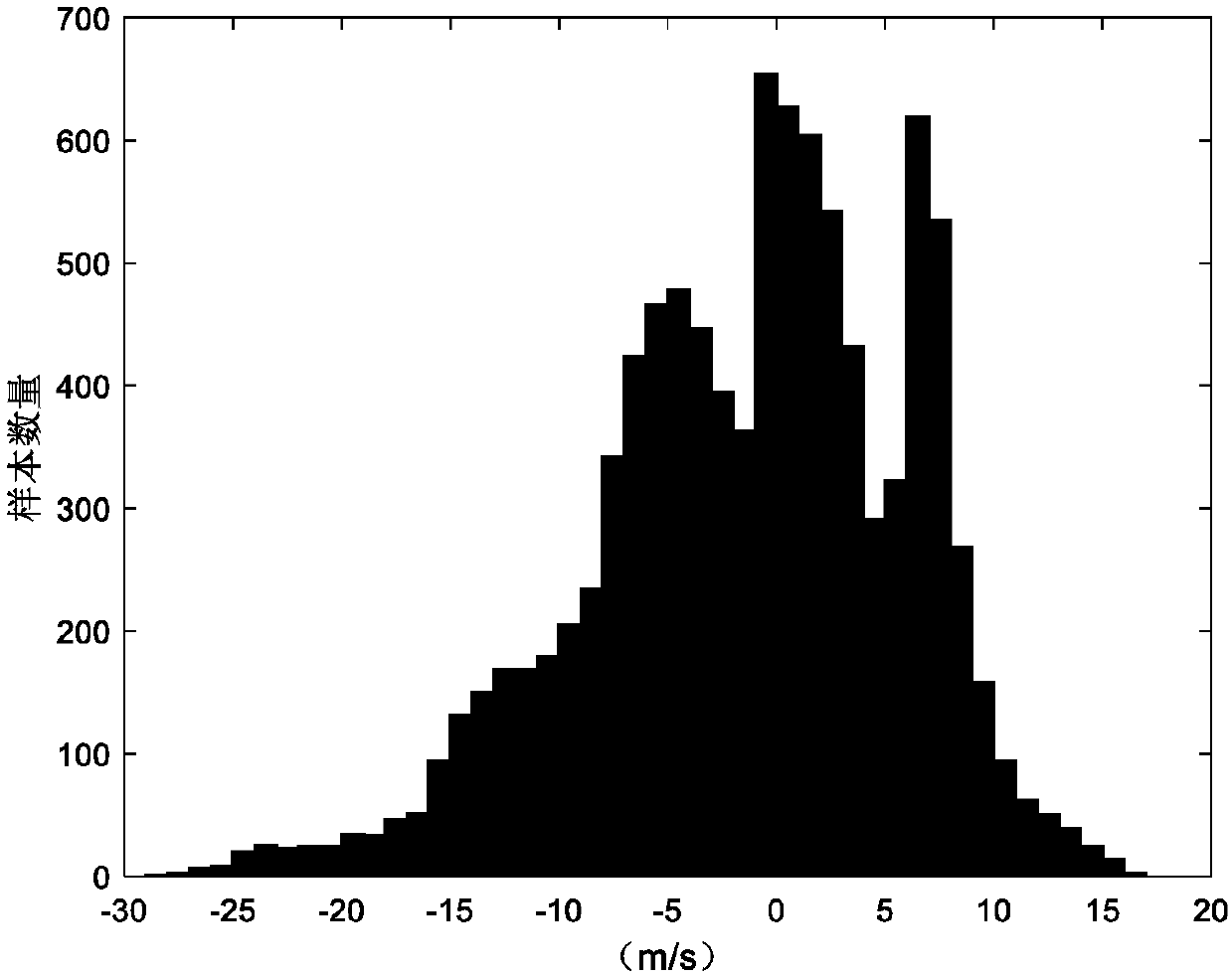Ship navigation work condition dividing method based on clustering analysis
A cluster analysis, ship technology, applied in special data processing applications, instruments, electrical digital data processing, etc., can solve problems prone to errors, omissions, etc.
- Summary
- Abstract
- Description
- Claims
- Application Information
AI Technical Summary
Problems solved by technology
Method used
Image
Examples
Embodiment 1
[0051] A specific embodiment of the present invention discloses a method for dividing ship navigation conditions based on cluster analysis. Specifically include the following steps:
[0052] Step 1: Obtain data on factors that affect the fuel consumption of the main engine diesel engine.
[0053] Specifically, data on influencing factors is collected.
[0054] When the main engine diesel engine and its auxiliary equipment, hull, and propellers are in good condition, the main factors affecting the fuel consumption of the main engine diesel engine are: ship draught (load), ship fouling, meteorological conditions (wind and wave conditions), ship drag, narrow channel Or sailing in shallow water, etc.
[0055] Step 2: Organize the collected data.
[0056] Specifically, first clean the collected data.
[0057] Since there are singular values in the collected data due to sensor abnormalities, ship manipulation, etc., these data are not generated by the differences in operating conditions, a...
Embodiment 2
[0075] In this embodiment, the method for dividing the sailing conditions of a ship described in the first embodiment is described in detail.
[0076] Step 1. Obtain data on factors that affect the fuel consumption of the main engine diesel engine.
[0077] Preferably, the data volume includes average draught and relative wind speed.
[0078] Specifically, when a large ship is sailing in the ocean and is in a stable state, the changes in the clean state of the bottom of the ship, the towing of the ship, and the narrow channel or shallow water navigation can be ignored. However, the ship's draught will affect the ship's navigation resistance, change the process and main engine load, etc.
[0079] When the ship is operating normally on the route, the external wind and weather will change the slip rate of the propeller, which will have a certain impact on the normal navigation of the ship. The parameters of the ship's draft and wind conditions (wind direction and wind speed, relative wi...
PUM
 Login to View More
Login to View More Abstract
Description
Claims
Application Information
 Login to View More
Login to View More - R&D
- Intellectual Property
- Life Sciences
- Materials
- Tech Scout
- Unparalleled Data Quality
- Higher Quality Content
- 60% Fewer Hallucinations
Browse by: Latest US Patents, China's latest patents, Technical Efficacy Thesaurus, Application Domain, Technology Topic, Popular Technical Reports.
© 2025 PatSnap. All rights reserved.Legal|Privacy policy|Modern Slavery Act Transparency Statement|Sitemap|About US| Contact US: help@patsnap.com



